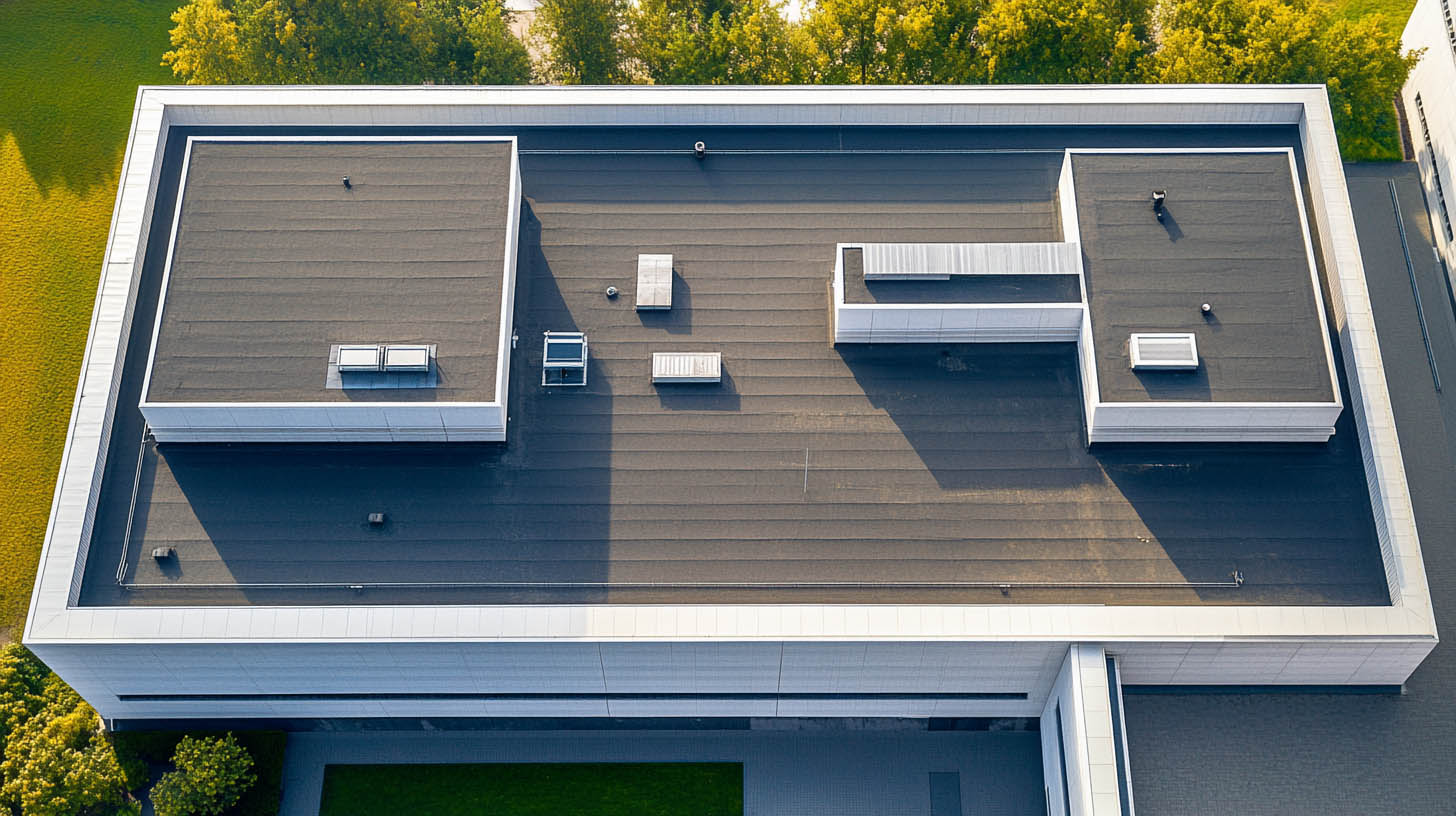
Rainstoppers Roofing offers expert commercial roof replacement solutions designed to meet your business’s unique needs. A well-maintained roof protects your assets, enhances energy efficiency, and ensures long-term structural integrity, making it a vital investment for any commercial property.
What is Commercial Roof Replacement?
Commercial roof replacement involves removing an existing roof system and installing a new one. This process requires detailed planning, material selection, and professional execution to ensure durability, compliance with building codes, and minimal disruption to operations.
Key Steps in Commercial Roof Replacement
1. Inspection and Assessment
A thorough inspection evaluates the current condition of the roof, identifying:
- Structural damage or weaknesses.
- Leaks and water infiltration.
- Areas requiring repairs or full replacement.
2. Material Selection
Selecting the right roofing material is critical for longevity and performance. Common options include:
- Single-Ply Membranes (TPO, PVC, EPDM): Affordable, durable, and energy-efficient.
- Metal Roofing: Long-lasting, fire-resistant, and sustainable.
- Built-Up Roofing (BUR): Layers of asphalt and felt for superior waterproofing.
- Modified Bitumen: Combines durability and flexibility for high-traffic areas.
3. Permits and Compliance
Ensure adherence to local building codes, safety regulations, and permit requirements before work begins. Compliance guarantees a smooth, hassle-free installation process.
4. Roof Removal and Substrate Repair
The old roofing materials are removed, and the roof deck is inspected for damage. Repairs to the substrate ensure a stable foundation for the new system.
5. New Roofing System Installation
Professionals install insulation, waterproof membranes, and other necessary components. Proper flashing, drainage systems, and fasteners ensure watertight performance.
6. Quality Assurance
Final inspections ensure the new roof meets quality standards, preventing future issues such as leaks or poor drainage.
Factors to Consider Before Roof Replacement
1. Roof Lifespan and Condition
Evaluate whether your current roof has reached the end of its lifespan. Signs like leaks, sagging, or recurring repairs indicate replacement is necessary.
2. Material Durability
Select materials based on:
- Weather conditions in your region.
- Resistance to UV exposure, moisture, and temperature fluctuations.
3. Budget and Long-Term Costs
While upfront costs matter, long-term savings from energy efficiency and minimal maintenance add significant value.
Key Insight: Metal roofs, though initially costlier, can last 50+ years with minimal upkeep, offering long-term cost benefits.
4. Business Downtime
Plan the replacement project to minimize disruptions to daily operations. Work with contractors who offer efficient scheduling and safety measures.
5. Warranty and Maintenance
Invest in systems backed by comprehensive warranties for materials and workmanship. Schedule regular maintenance to prolong roof lifespan.
Benefits of a Commercial Roof Replacement
- Enhanced Protection
A new roof prevents water infiltration, mold growth, and structural damage, safeguarding your property and assets. - Improved Energy Efficiency
Modern roofing materials provide superior insulation, reducing heating and cooling costs. - Increased Property Value
A new roof enhances your building’s appearance and reliability, making it more attractive to potential buyers or tenants. - Reduced Maintenance Costs
A newly installed roof minimizes the need for costly repairs and emergency fixes.
How to Choose a Roofing Contractor
Selecting the right contractor ensures a smooth, high-quality project. Look for:
- Experience in commercial roof replacements.
- Proper licenses, insurance, and compliance with local regulations.
- Clear communication and detailed project estimates.
- Warranties for materials and workmanship.
At Rainstoppers Roofing, our skilled professionals deliver reliable and efficient commercial roof replacement services with minimal disruption to your operations.
FAQs
1. How often should a commercial roof be replaced?
Commercial roofs typically last 20–30 years, depending on material quality and maintenance practices.
2. What are the signs that a commercial roof needs replacement?
Signs include water leaks, pooling water, visible sagging, cracks, and recurring repairs.
3. Which materials are best for a commercial roof replacement?
TPO, PVC, metal, and modified bitumen are popular due to their durability, energy efficiency, and cost-effectiveness.
4. How much does a commercial roof replacement cost?
Costs range between $5–$12 per square foot, depending on materials, size, and project complexity.
5. How can I minimize business downtime during replacement?
Work with contractors who offer efficient timelines, clear communication, and safety measures to ensure minimal disruption.
Conclusion
A commercial roof replacement is a critical investment that protects your property, enhances energy efficiency, and boosts your business’s value. By working with experienced contractors and selecting the right materials, you ensure a durable, cost-effective solution tailored to your needs.
To learn more about commercial roof replacement solutions, click here.
Contact Rainstoppers Roofing today to schedule a professional assessment and protect your business with a reliable commercial roofing system.
If you want to read a blog about preparing your roof for spring with a thorough inspection, click here.
